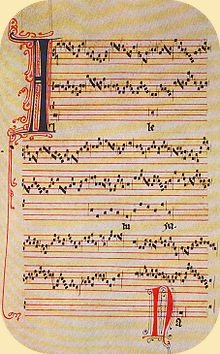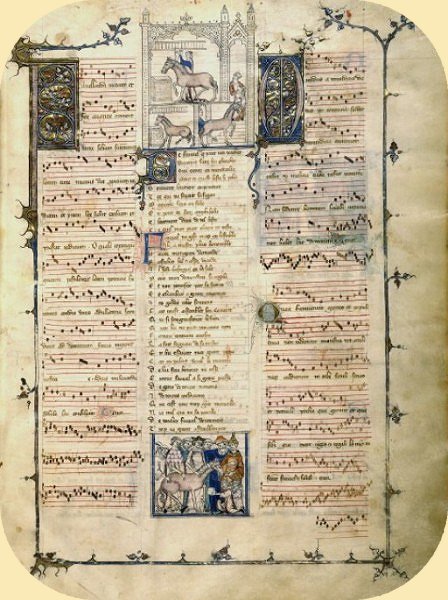pipe and tabor playing techniques
medieval Ars Nova rhythms
An explanation/development of part of the talk given by Doug
at The Taborers Society Annual Symposium, Gloucester, 2010
by frances
In the fourteenth century, French musicians developed a new set of musical concepts called Ars Nova with patterns based on the rhythms of poetry . This replaced the previous style which was even and unmeasured rhythm.
The poems had a standardised pattern of repeats of verses and a refrain, and the musical rhythmn followed this. Ars Nova brought a rhythmic freedom which allowed more variety, more expression and increased development of more musical forms. It has affected the development of musical structures that are felt up to the present time.
Three significant forms are:
a) rondeau in which refrains are repeated according to a set stylized pattern;
a form of verse also used in English poetry.b) ballade which typically featured a prominent upper voice, which was texted
and two lower voices which may have been vocalised or performed with instruments.c) virelai in which the overall musical structure is usually ABBA
reflecting the poetry in which the first and last sections have the same lyricsMusical Rhythms
Doug explained that the pipe and tabor accompanied these songs in the 13th and 14th centuries.The rhythmic system was devised in the last half of the 12th century and first explained in about 1260 in ' De mensurabili music' . There were six rhythmic modes. To enable a performer to recognize which of the six rhythmic modes was intended for a composition, or just one section of a composition, stereotyped combinations were developed. These indicated the patterns of long notes (longs) and short notes (breves).
Doug gave this example from the medieval treatises:
In practice the first mode was by far the most frequently used.
The fifth mode was used only in the lowest voice (or tenor); the sixth mode was most often found in an upper part.These patterns are grouped together into phrases. A phrase length was called an ordo (plural ordines) and the end of each was signalled by a rest.
page from Roman de FauvelA treatise that illustrates the musical innovations of the Ars Nova is the 'Roman de Fauvel', a huge compilation of poetry and music published in 1310 and 1314. The poetry satirises abuses in the medieval church at all levels from the King downwards. The subject of the poem is a donkey named Fauvel. The name 'Fauvel' itself is a satire as each letter refers to one of the six vices of the age: flattery, avarice, wickedness, vanity, envy and cowardice.
top of page







